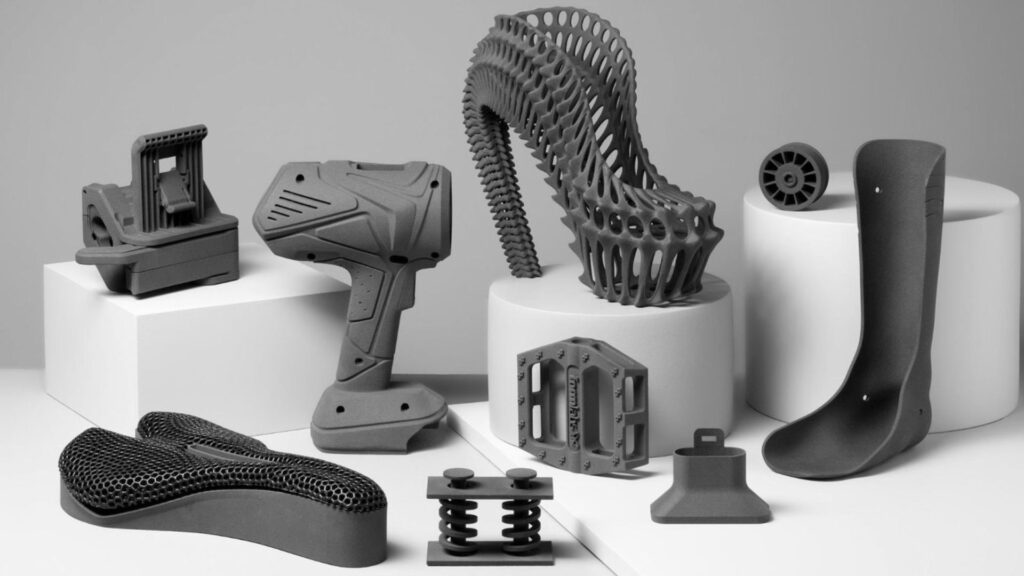Best 3D Printing Materials for Beginners
3D printing offers endless creative possibilities, but choosing the right material can be overwhelming for beginners. The material you select plays a crucial role in the quality of your prints, the ease of printing, and the overall success of your projects. Fortunately, several materials are user-friendly and well-suited for those just starting with 3D printing.
In this guide, we’ll explore the best 3D printing materials for beginners, focusing on ease of use, availability, and versatility.

PLA (Polylactic Acid)
PLA is the most popular and beginner-friendly 3D printing material. Made from renewable resources like corn starch or sugarcane, PLA is biodegradable, non-toxic, and environmentally friendly. Here’s why it’s a great choice for beginners:
- Ease of Printing: PLA is very easy to work with, especially for those new to 3D printing. It prints at relatively low temperatures (180-220°C) and doesn’t require a heated bed, making it ideal for entry-level 3D printers.
- Good Print Quality: PLA offers smooth and high-quality prints, with excellent resolution and fine details.
- Variety of Colors and Finishes: PLA comes in a wide variety of colors and finishes, including matte, glossy, and even glow-in-the-dark options, making it perfect for creative projects.
- Low Warping: PLA has minimal warping, meaning it’s less likely to distort or curl as it cools.
Best Uses: PLA is best for prototypes, models, decorative items, and cosmetic parts. It’s a great material for both functional and artistic prints, but it’s not as durable as other materials.
ABS (Acrylonitrile Butadiene Styrene)
ABS is another popular material that is known for its durability and strength. While slightly trickier to print with compared to PLA, it’s still a great option for beginners who are looking for something more robust.
- Strength and Durability: ABS is known for its toughness and impact resistance. It’s highly durable, making it suitable for items that will be exposed to wear and tear.
- Higher Print Temperature: ABS requires higher temperatures (220-250°C) for both the extruder and the heated bed, which can be a bit challenging for new users. However, many entry-level 3D printers now come equipped with heated beds that make ABS more accessible.
- Post-Processing: ABS can be smoothed using acetone vapor, giving it a shiny finish and enhancing the appearance of prints.
Best Uses: ABS is great for functional parts, tools, mechanical components, and toys. It’s particularly good for items that need to be durable or withstand heat, such as phone cases or kitchen gadgets.
PETG (Polyethylene Terephthalate Glycol)
PETG is a relatively newer material that combines the best features of PLA and ABS. It offers excellent durability while being easy to print with, making it a great choice for beginners who need stronger prints than PLA but without the complexities of ABS.
- Strength and Flexibility: PETG is strong, yet flexible, making it ideal for parts that need to endure stress without breaking. It’s also more impact-resistant than PLA.
- Low Odor: Unlike ABS, PETG emits little to no odor during printing, making it more pleasant to work with in smaller spaces.
- No Warping: PETG has very low warping, which makes it easier to print than ABS. It doesn’t require a heated bed but benefits from one for better adhesion.
Best Uses: PETG is great for mechanical parts, containers, tool handles, and protective covers. It’s an excellent material for outdoor items due to its weather resistance.
TPU (Thermoplastic Polyurethane)
TPU is a type of flexible filament that can bend and stretch, which makes it ideal for projects that need to be flexible or elastic. While it’s a bit trickier than PLA, it’s still accessible for beginners who want to explore flexible prints.
- Flexibility: TPU is highly flexible and elastic, meaning it can bend and stretch without breaking. It’s perfect for creating items like phone cases, shoe soles, or rubber-like components.
- Toughness: TPU is resistant to abrasion and impact, making it a durable choice for objects that undergo frequent wear.
- Moderate Print Difficulty: TPU requires slower printing speeds and careful attention to settings. However, with a little practice, beginners can achieve excellent results.
Best Uses: TPU is great for gaskets, rubber seals, wearable tech, protective gear, and toys. It’s perfect for items that require elasticity or shock absorption.
Nylon
Nylon is a strong, durable, and flexible material that’s becoming increasingly popular in 3D printing. It’s ideal for beginners who want to print tough, high-performance parts but are willing to experiment with a slightly more advanced material.
- High Strength: Nylon is known for its excellent tensile strength, making it one of the most durable 3D printing materials available. It’s perfect for parts that need to withstand high stress.
- Flexibility: Nylon is also quite flexible and resistant to abrasion, which makes it suitable for parts that experience constant movement.
- Challenges: Nylon tends to absorb moisture, so it needs to be stored properly. It also requires high printing temperatures (240-260°C) and a heated bed to prevent warping.
Best Uses: Nylon is perfect for functional prototypes, gears, mechanical parts, and tooling. It’s an excellent choice for applications that demand strength, flexibility, and resilience.
Conclusion
Choosing the right 3D printing material is key to your success as a beginner. If you’re just starting out, PLA is your safest bet, offering ease of use, low printing temperatures, and impressive results. For those looking for more durability, ABS and PETG are excellent choices, while TPU and Nylon are great options for more specialized applications like flexibility and strength.
As you gain more experience, you can experiment with more advanced filaments like wood fill or metal-infused filaments to create unique prints with different textures and properties. The world of 3D printing materials is vast, and exploring it will open up endless creative possibilities for your projects.



